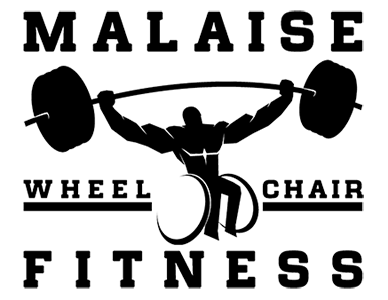At the most basic level weight training for Strength, Power, Speed or Size is not rocket science as you must perform vertical pulls, vertical pushes, horizontal pulls and horizontal pushes. There are a lot of assistance moves that can help balance out the major movers for each of these movements, but those are the main movements. In terms of upper body wheelchair lifters are set with horizontal and vertical pushing with bench and military press variations, vertical pulls with pull up variations and lat pull downs but there is a bit difficulty with horizontal pulls. There is a saying in weight training circles, "You Must Row to Grow". Rows are a vital exercise for basic body balance and strength and to support anybody going for world record bench presses. But what are our options for rows?
I was just reading an article on T-Nation, 8 Great Rowing Variations and this is a GREAT example of why I created this website as a lot of info out on the internet for exercise selection for a wheelchair lifter is crap. I must preface by saying I really appreciate T-Nation, I have learned more about general lifting and nutrition from this website than anywhere else over my lifting years. And the article also mentions the "Must Row to Grow" principle.
As wheelchair lifters we must focus on exercises that:
- Ability to go Heavy
- Are Safe or Stable
- Are Low Maintenance
Heavy
Every set does not have to be an attempt to break a world record, or a personal record. But for an exercise to be highly beneficial to the wheelchair lifter it must be something that you can continually progress on. It must be an exercise you can go balls to the wall on.
Safe and Stable
To meet the above criteria the exercise must have the lifter in a stable position, where you are locked in and are not concerned with bracing yourself. This criteria can be injury specific as I am a T7 Para and often need to use one of my arms to stabilize my self on a lot of lifts while in the chair.
Low Maintenance
This really applies to answering this question, "can I do this exercise without the help from someone else." This applies to getting in position to do the lift as well as adding the weight, loading yourself and the weight. This applies more to my situation as I most often lift alone, but may be less of an issue for others.
These items are the basic criteria, and will probably break off into their own section under Exercises in the future. The article lists eight different rowing variations and I would argue that not ONE of these meets my criteria, each mainly failing on the Heavy and Stable criteria (related to your injury). In the Wheelchair Exercise Index I only call out 2 variation of rows that meet the criteria and I stand by these. In the T-nation article nearly every row involved a standing, bent over row variation. Trust me, from my experience these lifts are mostly shit over time compared to the exercises I provided. If you do not have your chest supported as you pull the weight horizontally towards you the stability is terrible. There is a third rowing exercise that I will be adding to the index that works for the wheelchair lifter but is an advanced lift and requires some accessories making it a bit high on the maintenance side.
I have tried variations of bent over rows by staying in my chair, bending over with my chest nearly resting on my knees to lift a dumbell or a loaded barbell in a landmine fashion and the same problems arise.
NOTE:(And these must be done with one arm as there exists no stability whatsoever to attempt to lift with two arms, which is a mute point since the wheelchair itself is in the way.)
As I add more weight the chair itself becomes tippy, and doing a somersault while trying to do some rows is not the goal.
Plate Loaded Row Machine
The best of the best options is a plate loaded row machine with a chest support. The negative with this machine can be the plate loader is too high to reach from the chair. Or we can reach it but adding a plate heavier than a 25 is difficult.
Dumbell Rows from Incline
This one always works! This is my goto rowing exercise because I am in complete control. I have stability and do not need help loading an apparatus that hits the ceiling. The ONLY negative is I have to do these one arm at a time since I cannot grab the dumbells from the ground with both arms at once. My progressions on this exercise are infinite with a simple dumbell handle where you add plates for weight versus having to keep a full set of dumbells in my garage.
Conclusion
Be careful with what you read on the internet regarding exercises. Even at a respectable site such as T-Nation the articles can be oblivious to the needs of the wheelchair lifter as we are not the typical lifter or audience they have in mind. At sites that are less respectable the exercises in question could be downright dangerous to your health!!!!
